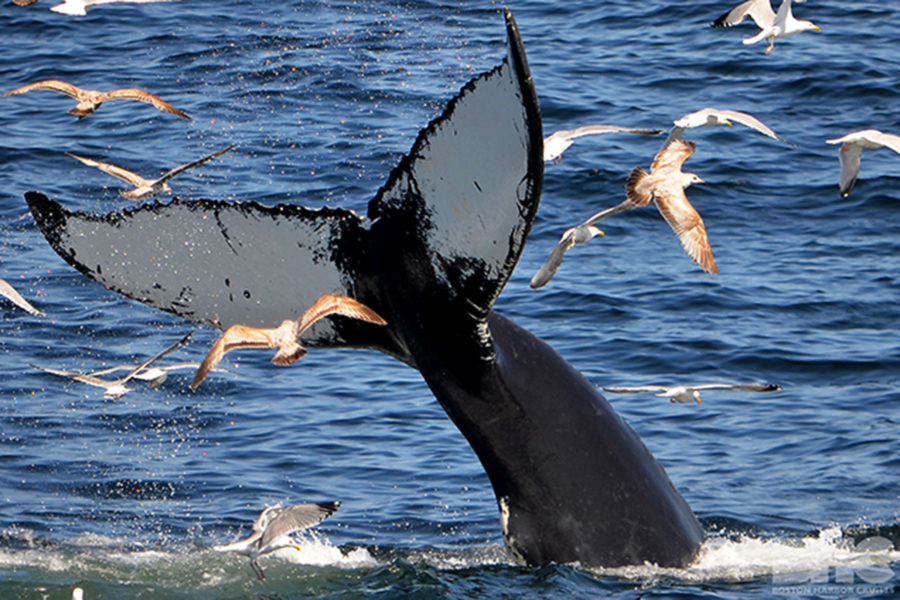Laura Howes, Director of Research and Education for Boston Harbor Cruises whale watch program, didn’t see a whale in the wild until college. But once she had, she was hooked.
Today, the marine scientist has made it her mission to spread information about whales in the Boston area, and how our own actions impact their environments.
“Boston is home to the Stellwagen Bank National Marine Sanctuary, which was designated in 1992,” says Howes. “It’s a perfect spot for a lot of different wildlife; [Stellwagen Bank] is a feeding ground, so we have different types of whales, sharks, birds, all kinds of stuff. I’d say [it’s] one of the best whale watching spots in the U.S.”
Every year, from March until November or December, marine life of all kinds migrates to Boston to feed on the plethora of plankton and other nutrients that are rich in our waters. Then, like our older residents, they head back to the coast of Florida or the Dominican Republic to avoid winter’s chill.
Boston Harbor Cruises partners with the New England Aquarium on their whale watch program. Multiple times a day, every day, passenger boats head out to try and catch a glimpse of these whales in their natural habitat. Most common are humpback whales, but visitors might also see minke whales, dolphins and finback whales, as well as a number of bird species. The area is so replete with wildlife that Boston Harbor Cruises guarantees you see a whale on your outing, or you get a free ticket.
According to Howes there are about 900 whales that routinely return to this area year after year. The naturalists are able to identify humpback whales by the distinctive patterns they have under their tails, like a fingerprint. As a result, you might spot some of the crew’s favorites on your trip: named Sprinkles, Shuffleboard and Etch-a-Sketch.
In recent years, there’s a higher chance you might also spot a great white shark. As the previously dwindling grey seal population rises, sharks — their natural predators — are returning to Massachusetts Bay.
But, whale watching isn’t just about snapping the best picture of a fin dive. Howes says these trips are crucial to educating the public about endangered ocean species.
“A lot of people we get on the boat who don’t live by, or haven’t grown up by, an ocean don’t understand their connection to it,” says Howes. “For instance, one species that we only occasionally see called the North Atlantic right whale, there are only 400 of them in the entire population. They were decimated by whaling and now they face problems with entanglement in fishing gear.”
Naturalists onboard also underscore what people can do to preserve these animal populations. It can be as simple as buying a license plate with a whale on it, which donates 100 percent of the proceeds to the Center for Coastal Studies, which detangles large whales in the Massachusetts area.
Howes hopes the whale watches are fun and entertaining, but also inspire people to fight for environmental preservation. She says, “If you go out to a restaurant and you refuse a plastic straw, it’s a perfect opportunity to explain to your friends, why you’re doing it and that encourages more change.”
And, if you’ve never seen a whale in the wild, take our word that there’s nothing quite like it.



 2 min read
2 min read


